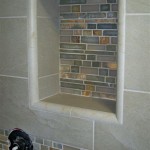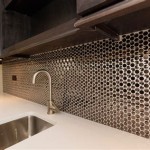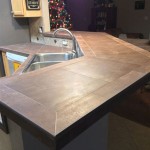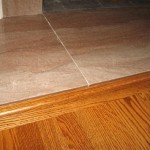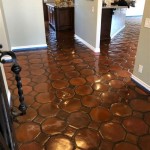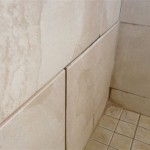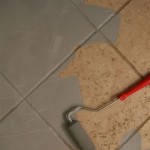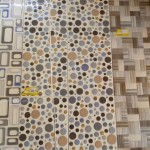Mosaic Tile Design: The Perfect Touch For Your Homes
Mosaic tile design offers a versatile and enduring method for enhancing the aesthetic appeal and functionality of residential spaces. From intricate artistic compositions to simple, elegant patterns, mosaic tiles provide a spectrum of options to suit diverse design preferences and architectural styles. This article explores the various facets of mosaic tile design, highlighting its benefits, applications, and considerations for integration into residential spaces.
The term "mosaic" refers to an art form where small pieces of material, traditionally glass, stone, or ceramic, are meticulously arranged to create a cohesive image or pattern. This technique dates back thousands of years, with evidence of mosaic usage found in ancient civilizations like Greece and Rome. The enduring popularity of mosaic tile stems from its inherent durability, water resistance, and ability to add visual texture and complexity to surfaces.
Mosaic tiles are available in a multitude of materials, shapes, and sizes. Common materials include glass, ceramic, porcelain, natural stone (such as marble, travertine, and slate), and even metal. The choice of material significantly impacts the overall look and feel of the mosaic. Glass tiles, for example, are known for their reflective qualities and vibrant colors, while natural stone offers a more earthy and organic aesthetic. Ceramic and porcelain tiles provide a balance of durability and affordability, making them a popular choice for many applications.
The shapes of mosaic tiles are equally diverse, ranging from classic squares and rectangles to more contemporary circles, hexagons, and even irregular shapes. The size of the individual tiles also plays a crucial role in the overall design. Smaller tiles create a more detailed and intricate pattern, while larger tiles offer a bolder and more modern look. The combination of different shapes, sizes, and materials allows for the creation of truly unique and personalized mosaic designs.
Durability and Longevity
One of the primary advantages of mosaic tiles is their exceptional durability. The small size and dense composition of individual tiles contribute to their resistance to cracking, chipping, and staining. Mosaic tiles are particularly well-suited for high-traffic areas, such as hallways, entryways, and kitchens, where they can withstand constant use without showing signs of wear and tear. The use of high-quality materials, such as porcelain or glass, further enhances their longevity.
Proper installation is crucial to maximizing the durability of mosaic tiles. A well-prepared substrate, along with the use of appropriate adhesives and grout, ensures that the tiles are securely bonded to the surface. Regular maintenance, such as cleaning with mild detergents and sealing grout lines, helps to protect the tiles from moisture and stains, extending their lifespan for years to come.
Furthermore, the inherent water resistance of many mosaic tile materials makes them an excellent choice for bathrooms, showers, and swimming pools. Glass and porcelain tiles, in particular, are impervious to water damage and can withstand prolonged exposure to moisture without deteriorating. This makes them ideal for creating visually stunning and functional wet spaces.
Versatile Design Applications
Mosaic tile designs are incredibly versatile and can be incorporated into a wide range of residential spaces. From subtle accents to bold statement pieces, mosaic tiles can transform the look and feel of any room. In bathrooms, mosaic tiles are often used to create striking shower walls, backsplashes, or decorative borders. Their water resistance and easy maintenance make them a practical and aesthetically pleasing choice for this environment.
In kitchens, mosaic tiles can be used to create eye-catching backsplashes, adding color and texture to the space. They can also be used to create decorative inlays on countertops or flooring, adding a touch of elegance and sophistication. The ability to customize the design with different colors, patterns, and materials allows homeowners to create a kitchen that reflects their personal style.
Beyond bathrooms and kitchens, mosaic tiles can be used in other areas of the home to create unique and visually appealing features. They can be used to create decorative borders around fireplaces, accent walls in living rooms, or even outdoor patios and decks. The possibilities are virtually limitless, limited only by imagination.
The use of mosaic tile extends to various design styles. In traditional homes, classic mosaic patterns with intricate floral or geometric designs can add a touch of elegance and sophistication. In modern homes, minimalist mosaic designs with clean lines and bold colors can create a contemporary and stylish look. The versatility of mosaic tiles allows them to seamlessly integrate into any design aesthetic.
Design Considerations and Installation
When incorporating mosaic tiles into a home design, several factors must be considered to ensure a successful outcome. The first step is to carefully plan the design, taking into account the size and shape of the space, the existing color scheme, and the desired aesthetic. It is also important to consider the lighting conditions, as the way light reflects off the tiles can significantly impact their appearance.
The choice of mosaic tile material is another crucial consideration. Different materials offer different levels of durability, water resistance, and visual appeal. Glass tiles, for example, are known for their vibrant colors and reflective qualities, but they can be more susceptible to scratching than porcelain tiles. Natural stone tiles offer a unique and organic look, but they may require more maintenance to prevent staining.
The installation of mosaic tiles requires careful attention to detail. A properly prepared substrate is essential to ensure that the tiles are securely bonded to the surface. The use of appropriate adhesives and grout is also crucial to prevent moisture from seeping behind the tiles and causing damage. In some cases, it may be necessary to hire a professional installer to ensure that the tiles are installed correctly and that the finished product meets expectations.
Grout selection is an important aspect for the overall mosaic tiles look. The color and type of grout can significantly impact the overall appearance of the mosaic. A contrasting grout color can accentuate the individual tiles and create a bold, graphic look, while a matching grout color can create a more seamless and subtle effect. Epoxy grouts are often recommended for wet areas, as they are waterproof and resistant to staining.
Maintaining mosaic tiles is relatively straightforward. Regular cleaning with mild detergents and water is usually sufficient to keep them looking their best. Grout lines should be sealed periodically to prevent moisture from penetrating and causing stains. Harsh chemicals and abrasive cleaners should be avoided, as they can damage the surface of the tiles.
Mosaic tile design offers a rich tapestry of possibilities for homeowners seeking to enhance the beauty and functionality of their living spaces. From the selection of materials and patterns to the meticulous installation process, the implementation of mosaic tiles requires careful planning and execution. The result, however, is a timeless and elegant addition that will enrich the home for years to come. The inherent durability, versatility, and aesthetic appeal of mosaic tiles make them a design choice that combines artistic expression with lasting value.

Elevate Your Decor With These Mosaic Tile Designs

10 Mosaic Floor Design Ideas Art Masterclass

20 Mosaic Tiles Designs For Kitchen Bathroom And Wall

8 Ways To Use Mosaic And Patterned Ceramic Tiles In Your Home

2024 Spring Mosaic Bathroom Tiles Its Trends

The Future Of Bathroom Design 3 Tile Trends For 2025

20 Mosaic Tiles Designs For Kitchen Bathroom And Wall

Mosaic Bathroom Tiles Ezarri

The Mosaic Tile Picks For Interior Design Trends

Elevate Your Decor With These Mosaic Tile Designs
Related Posts

